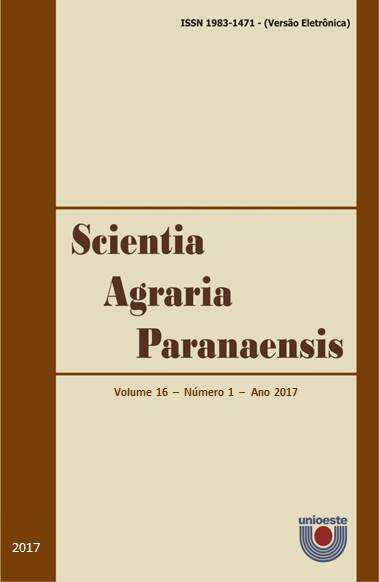Implications of the use of glycerin on fed of finishing pigs: review
Keywords:
coproducts, metabolism, glycerol, performance.Abstract
Brazilian pig production has been highlighted worldwide, currently the country has occupied the fourth place both in production and export of pork. The the Brazilian governmen has required the addition of 7% biodiesel in fossil diesel, this requirement also increased the amount of glycerin which is a byproduct from production of biodiesel by transesterification. Glycerin has interesting nutritional characteristics for animal feed, and reduce the cost of diets to have energy value similar to corn. For each 90 m3 of biodiesel produced by transesterification of vegetable oils are generated 10 m3 of glycerin. Glycerol is a nutritional component of dietary fat (triglycerides) in the diet can be absorbed as monoglycerides constituent after a partial hydrolysis of triglycerides. In general metabolism, glycerol plays a vital role, with important structural component of triglycerides and phospholipids. The variability of the components of glycerin as glycerol and sodium content are parameters that are not considered may limit its use in animal feed. Studies of the use of glycerin in feeding finishing pigs indicate that the ingredient does not compromise the performance of animals nor carcass characteristics and meat quality, some studies showed improvement in meat water retention capacity.
qualidade de carne, alguns estudos apresentou melhoria na capacidade de retenção de água da carne.
Downloads
Additional Files
Published
How to Cite
Issue
Section
License
Aviso de Direito Autoral Creative Commons
Política para Periódicos de Acesso Livre
Autores que publicam nesta revista concordam com os seguintes termos:
1. Autores mantém os direitos autorais e concedem à revista o direito de primeira publicação, com o trabalho simultaneamente licenciado sob a Licença Creative Commons Attribution que permite o compartilhamento do trabalho com reconhecimento da autoria e publicação inicial nesta revista.2. Autores têm autorização para assumir contratos adicionais separadamente, para distribuição não-exclusiva da versão do trabalho publicada nesta revista (ex.: publicar em repositório institucional ou como capítulo de livro), com reconhecimento de autoria e publicação inicial nesta revista.
3. Autores têm permissão e são estimulados a publicar e distribuir seu trabalho online (ex.: em repositórios institucionais ou na sua página pessoal) a qualquer ponto antes ou durante o processo editorial, já que isso pode gerar alterações produtivas, bem como aumentar o impacto e a citação do trabalho publicado (Veja O Efeito do Acesso Livre).
Licença Creative Commons
Esta obra está licenciada com uma Licença Creative Commons Atribuição-NãoComercial-CompartilhaIgual 4.0 Internacional, o que permite compartilhar, copiar, distribuir, exibir, reproduzir, a totalidade ou partes desde que não tenha objetivo comercial e sejam citados os autores e a fonte.


